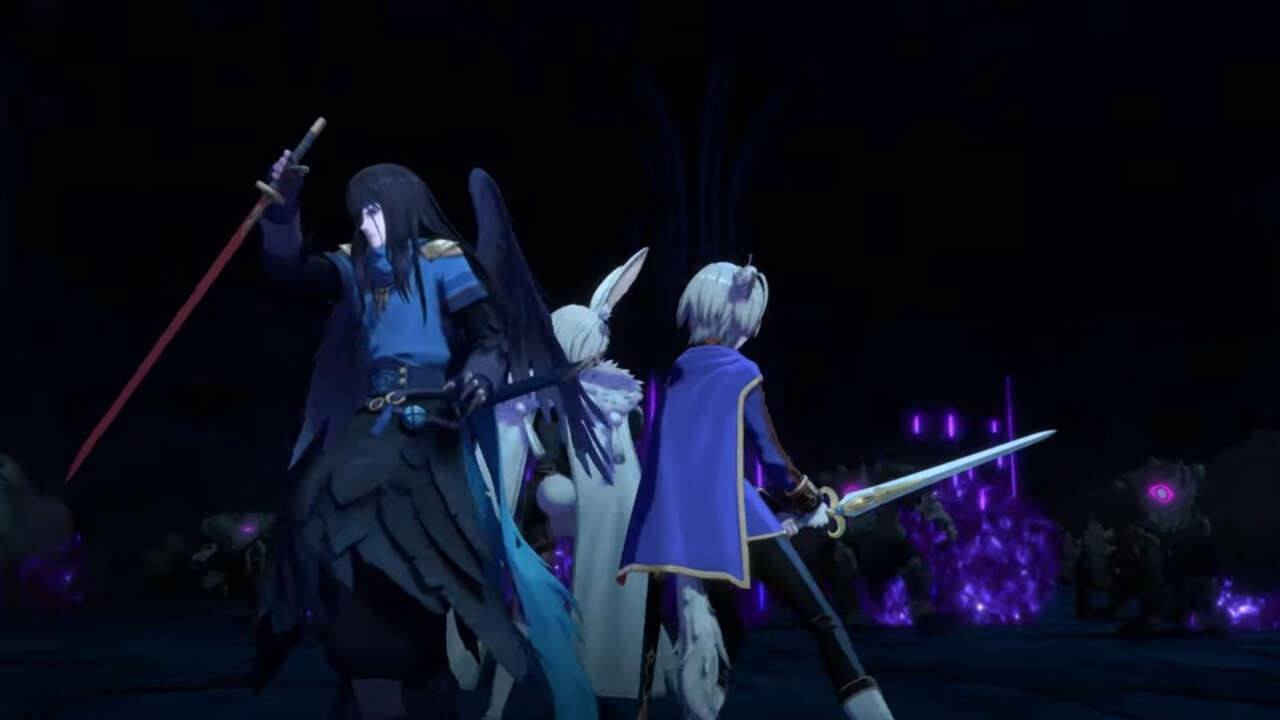Fire Emblem Shadows Launch Surprise: Nintendo’s Real-Time Tactics Game Meets Social Deduction on Mobile
Popular Now
 God of War Ragnarök
God of War Ragnarök
 R.E.P.O
R.E.P.O
 League of Legends
League of Legends
 Minecraft
Minecraft
 Black Myth: Wukong
Black Myth: Wukong
 BeamNG.drive
BeamNG.drive
 Counter-Strike 2
Counter-Strike 2
 Candy Crush Saga
Candy Crush Saga
 Rust
Rust
 Brawl Stars
Brawl Stars 
In a move that caught the Mobile Gaming and Strategy RPG communities completely by surprise, Nintendo has “shadow-dropped” a brand-new title for smart devices: Fire Emblem Shadows. The game, developed by Intelligent Systems and DeNA, immediately stood out not just as a new spin-off for the wildly successful Fire Emblem franchise, but for its bold, genre-bending design, which marries tactical gameplay with the Social Deduction mechanics popularized by games like Among Us.
The Core Concept: Tactics and Treachery
Fire Emblem Shadows is officially described as a “Real-Time Tactics and Treachery” game. It takes the epic, lore-rich world of Fire Emblem and injects an element of paranoia and player-versus-player (PvP) intrigue directly into the combat structure. This strategic gamble by Nintendo aims to capture a new audience while leveraging the established Brand Recognition of one of its most valuable IPs.
- The Two Factions: Players are cast as either a Disciple of Light or a hidden Disciple of Shadow. The Disciples of Light aim to progress through a challenging labyrinth map, while the lone Disciple of Shadow works in secret to sabotage the team’s efforts.
- Three-Player Battles: Each match involves three players who appear to be cooperating against the environment and computer-controlled enemies. However, one is the traitor, forcing the other two to constantly observe and deduce their ally’s true allegiance.
This structure is the first time a major Nintendo franchise has so heavily leaned into the Deception Gameplay genre, which is known for driving intense player engagement and high Viral Marketing potential.
 Gameplay Breakdown: Real-Time Strategy with a Twist
Gameplay Breakdown: Real-Time Strategy with a Twist
While the game carries the Fire Emblem name, the battle system is a distinct departure from the franchise’s traditional Turn-Based Tactical RPG roots. The combat unfolds in Real-Time, with players having limited, high-impact control over their units.
The Battle Phase:
- Auto-Battler Core: Characters largely move and attack automatically. The player’s primary role is to deploy special Spells and Magic Skills that regenerate on cooldown timers. These spells can be used to damage enemies, heal allies, or provide status buffs—but they can also be used subtly to sabotage your team if you are the Disciple of Shadow.
- Strategic Depth in Spells: The actual strategy lies in the selection and timing of these abilities. A Disciple of Shadow might deliberately place an area-of-effect (AoE) attack to “accidentally” wound an ally, or neglect a critical healing opportunity, creating a web of suspicion.
The Deduction Phase (The Among Us Element):
The Mind Games begin in earnest after the initial battle. Players must cast a Vote to determine who they believe is the hidden Disciple of Shadow. The outcome of this vote directly influences the conditions of the next battle phase, raising the Stakes and adding a powerful, persistent incentive for correct deduction or successful deception.
- Consequence-Driven Voting: Correctly identifying the traitor grants the Disciples of Light an advantage in the following fight (e.g., bonus health or resources), making the encounter easier. A failed vote, or a successfully deceived majority, grants the Shadow a significant upper hand, making victory for the light side far more challenging.
Market Impact and Monetization Strategy
The sudden “shadow drop” on iOS and Android signals a strong, renewed push by Nintendo into the highly lucrative Mobile Game Market, following a brief lull in new IP releases.
Free-to-Play Structure:
Fire Emblem Shadows has launched as a Free-to-Start title, a model that has proven immensely profitable for Nintendo with the original Fire Emblem Heroes—a game that has generated well over $1.6 Billion in revenue since its 2017 launch. The new game’s monetization is built around the following high-value areas:
- Gacha Mechanics: Expectedly, the game features a gacha system for acquiring new, powerful Disciples (characters), weapons, and unique ability loadouts. This ensures a deep, long-term Player Retention loop.
- Premium Season Pass: A Seasonal Battle Pass system is available, offering exclusive rewards such as rare currencies, unique cosmetics, and classic Fire Emblem characters—like the confirmed launch-pass reward, Lyn – Plains Wind—to users who purchase the premium track. These offerings are designed to maximize Average Revenue Per User (ARPU).
 A Bold Move for the Franchise:
A Bold Move for the Franchise:
The game’s release comes shortly after the announcement of the next mainline console entry, Fire Emblem: Fortune’s Weave for the rumored Nintendo Switch 2 in 2026. This mobile spin-off serves a dual purpose: expanding the IP’s reach to a Casual Gaming audience through the accessible social deduction mechanics, while simultaneously maintaining Franchise Momentum and driving interest in the core Strategy-Role Playing series. While some initial reviews have criticized the auto-battler aspects of the core combat, the psychological element of deception and the robust monetization strategy point to a potential Commercial Success for Nintendo’s newest foray into mobile tactics.









 Gameplay Breakdown: Real-Time Strategy with a Twist
Gameplay Breakdown: Real-Time Strategy with a Twist